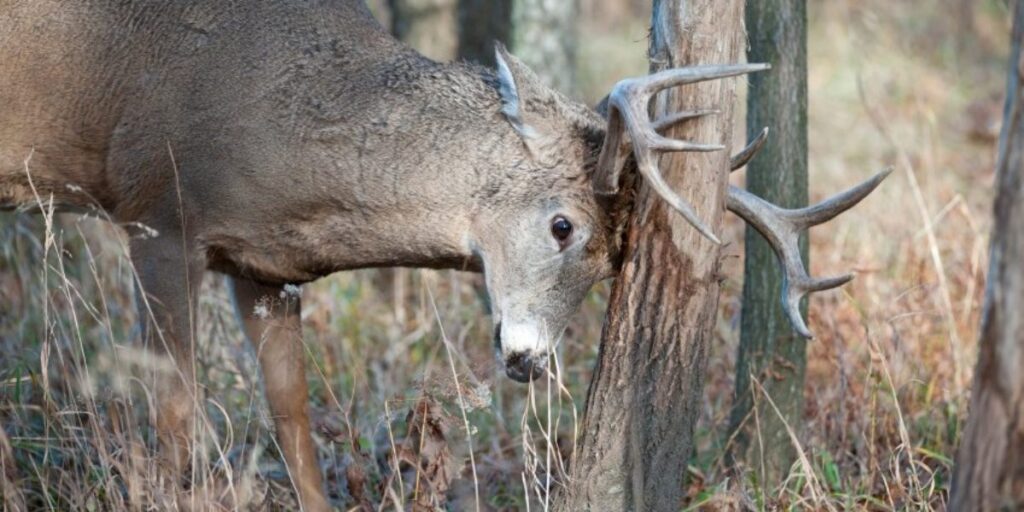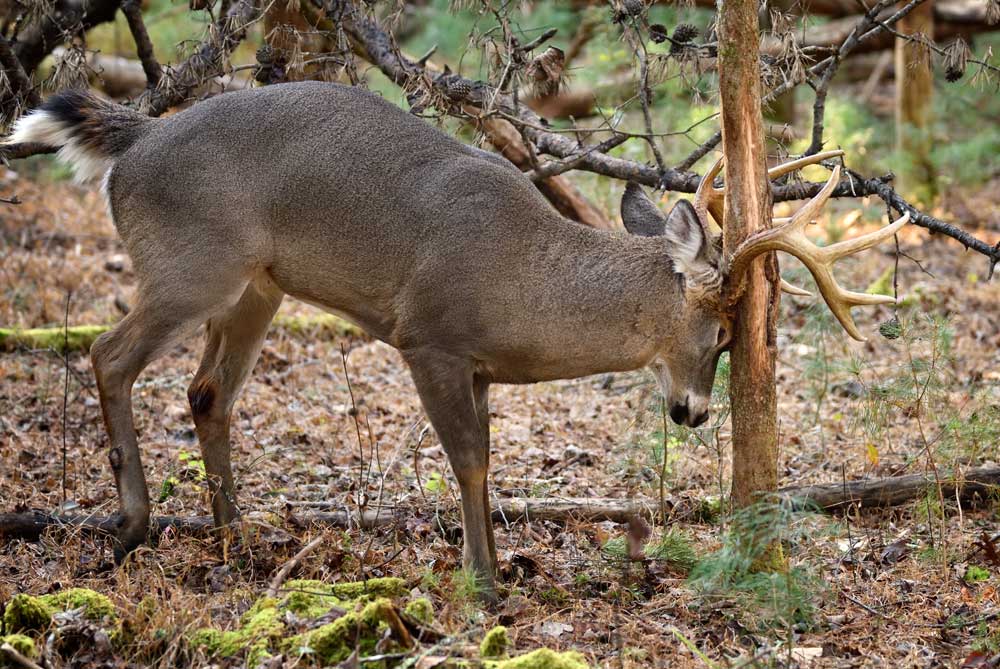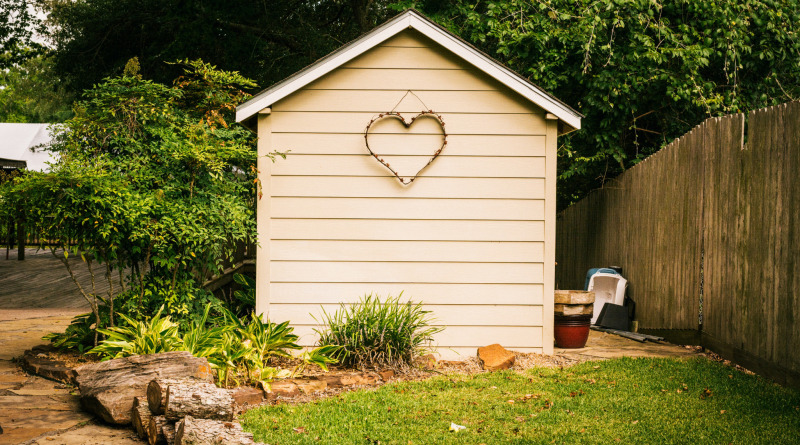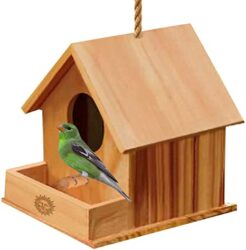Why Do Bucks Rub Trees? While walking through the forest in fall, you may come across trees with patches of stripped bark.
This is the work of bucks who have rubbed themselves against the trunks and worn them down.
Why do bucks rub trees like this?
Why Do Bucks Rub Trees?
Like most animals. Bucks aren’t going to put their time and effort into something like this without a good reason.
This isn’t about stripping the bark from the tree and deliberately causing damage. Instead, it is all about what is left behind.
Whether that means a scent that we can’t pick up on as humans or some shed velvet. There are a few possible reasons why bucks rub trees.
They may do this in order to
- Communicate with female deer.
- Rub the velvet from their antlers.
- Possibly to strengthen their neck muscles.
Bucks Rubbing Trees To Scent Mark For Females.
Bucks have a lot of scent glands across their body that allow for potent secretions onto tree trunks and other posts. Some are found in the legs and there are others around the face, such as on the forehead. These glands become highly important in the latter half of the year when bucks need to communicate with other individuals. Older males will also end up secreting more than younger ones and may do so more often because of their status and high testosterone levels. But what are they trying to say?
One reason for this scent marking is to send a signal to females in the area that they are ready to mate. The scent is designed to stimulate females coming into heat and encourage them to seek out the perfect father for their offspring. The stronger the message the better.
Bucks Rubbing Trees To Communicate With Other Males.
These scented messages also have a secondary purpose for the males in the area. While females are aroused by the scent and can think about mating, young males can find that their sex drive is suppressed. This is ideal for the older buck as not only is he showcasing his presence in the territory to warn off rivals, but he also actively suppressing any chance they have of mating with the female. In turn, he has a much greater chance of passing on his genes to more young that season.
Bucks Rubbing Trees To Remove Their Velvet.
In addition to communication, a buck may use these trees as suitable scratching posts for removing the velvet from their antlers. Velvet is an important part of the buck’s antlers while they are growing, as they provide protection and nutrients for the strongest and healthiest weaponry possible. Eventually, this will be shed in time for the rutting season to reveal the new shiny antlers beneath.
The problem is that this velvet can become annoying and messy at this point. Deer are often left with strips of blood-covered material hanging from the antlers and over their faces. The sooner they can strip it all off, the sooner they will be unimpeded and look their best. So, it helps to dislodge it against the bark of a tree. If you come across these rubbed trees in the fall, look out for any velvet on the ground or in the undergrowth.
Bucks Rubbing Trees To Strengthen Their Neck Muscles.
This last reason is a little more speculatory, but still makes a lot of sense. There is an idea that the act of rubbing against a tree helps to strengthen the muscles in the buck’s neck. We might see it as a form of strength training, like going to the gym to get in prime condition before a big fight. Of course, these bucks need to prepare for a fight in the ruck. After locking antlers with a rival, it is all about the power of that animal to hold that position and withstand the advances of the other male. The neck takes the brunt of that pressure and any slight advantage can make a difference.
The Meaning Behind Rubbed Trees On Your Hike.
Bucks say a lot via these rubbed areas on trees. These patches become important signposts with vital information for the rest of the deer population. So, if you come across one, look out for the velvet and think about the hidden messages during this crucial part of the season.




